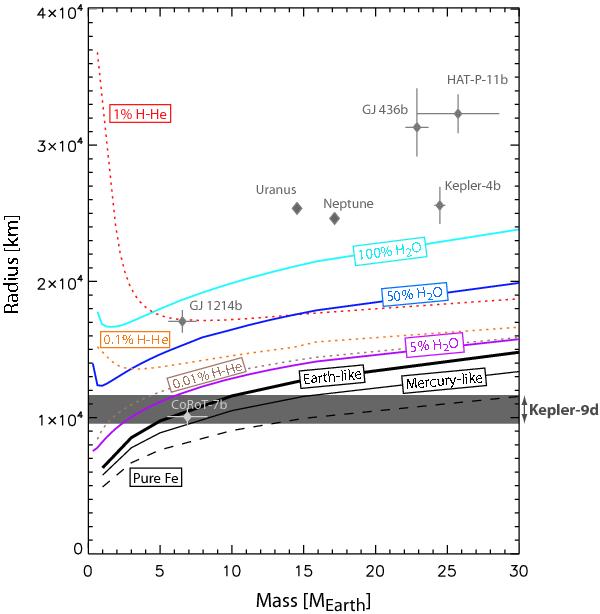Fig. 5

Mass-radius relations for different compositions of Kepler-9d. For the rocky scenarios: a pure iron planet (dashed black), a mercury-like planet – 35% silicate mantle above a 65% iron core (thin black), an earth-like planet – 63% silicate mantle above a 33% iron core (thick black). For the gaseous compositions: an earth-like nucleus covered by an H-He envelope of 0.01% (dotted brown), 0.1% (dotted orange), and 1% (dotted red) by mass; or covered by a water envelope of 5% (solid purple) and 50% (solid dark blue) by mass, or a pure 100% water-vapor planet (solid light blue). The radius range for Kepler-9d (grey band) suggests the planet has no considerable H-He. A physically plausible upper limit for the mass is 16 M⊕. Transiting exoplanets in a similar mass-radius range, as well as Uranus and Neptune, are shown for reference.
Current usage metrics show cumulative count of Article Views (full-text article views including HTML views, PDF and ePub downloads, according to the available data) and Abstracts Views on Vision4Press platform.
Data correspond to usage on the plateform after 2015. The current usage metrics is available 48-96 hours after online publication and is updated daily on week days.
Initial download of the metrics may take a while.


